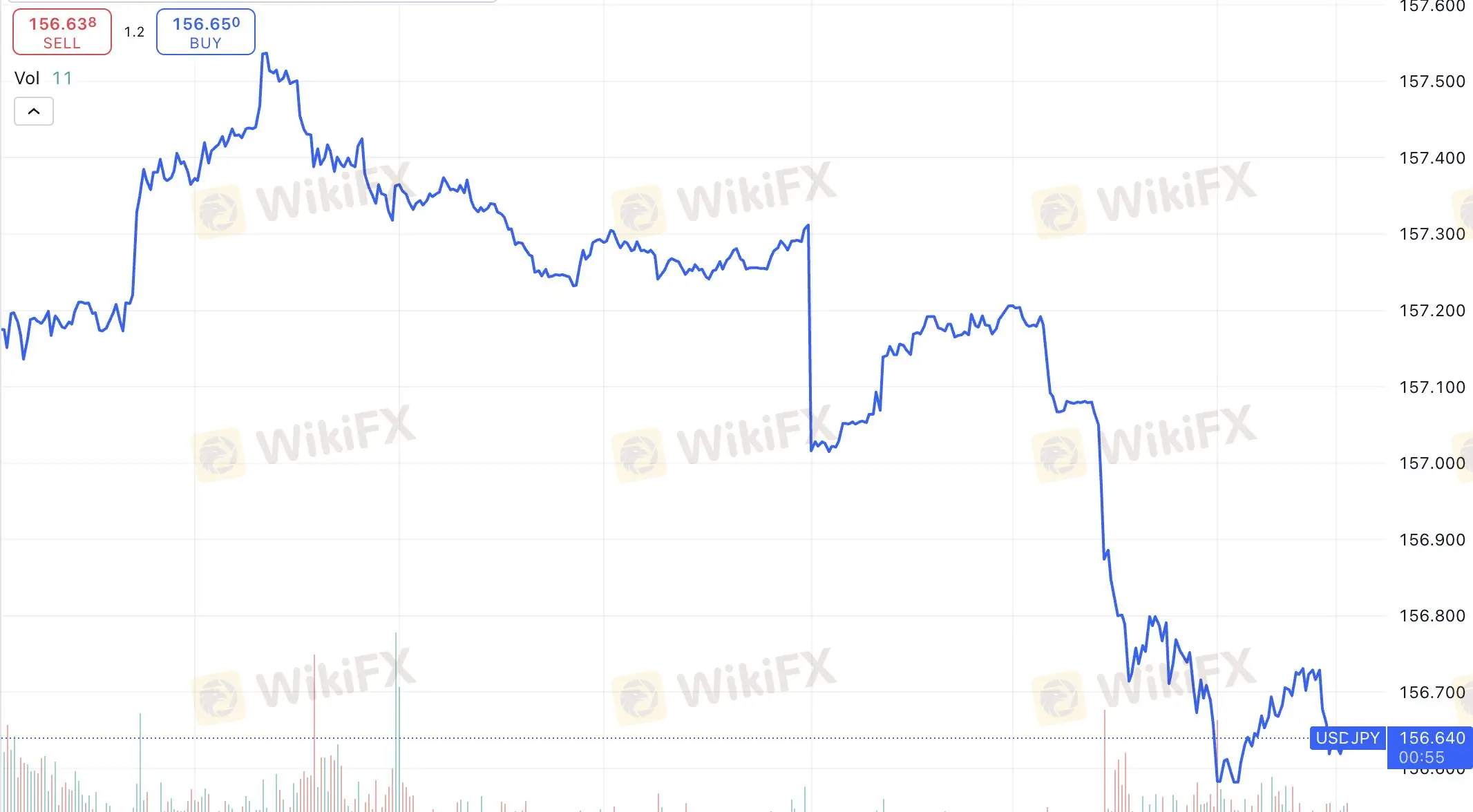简体中文
繁體中文
English
Pусский
日本語
ภาษาไทย
Tiếng Việt
Bahasa Indonesia
Español
हिन्दी
Filippiiniläinen
Français
Deutsch
Português
Türkçe
한국어
العربية
Has the Yen Lost Its Safe-Haven Status?
Abstract:The Japanese yen failed to create a miracle in 2024, continuing its four-year decline against the US dollar. Does the yen still retain its safe-haven properties? Will the interest rate differential between the US and Japan narrow?

By the end of 2024, the exchange rate hovered around 156 yen to the dollar, with a 10% drop for the year, surpassing the 7% decline in 2023. Contrary to market expectations, the US-Japan interest rate gap did not narrow. Since 2023, the significant divergence between the Federal Reserve's interest rate hikes and the Bank of Japan's ongoing accommodative monetary policy has rapidly expanded this gap. This has driven a surge in “carry trades,” where investors borrow yen at low rates and invest in higher-yielding assets.
Moreover, while the Fed did cut rates in 2024, the pace of those cuts was slow, failing to effectively reduce the interest rate differential or curb the yen's depreciation. As a result, the interest rate gap between the US and Japan remains wide, pushing the yen to its historical low range of 156 yen to the dollar. The trend of speculative yen selling continues to expand, and volatility risks for the yen are expected to persist as we enter 2025.

The Yen as a Safe-Haven Currency
The yen has long been considered a “safe-haven” currency. Even in a low-interest environment, the yen can attract safe-haven capital due to Japan's stable government and large foreign exchange reserves. However, Japan's prolonged low-interest-rate environment and the Bank of Japan's monetary easing policies have diminished the yen's safe-haven appeal. The Bank's negative interest rates and large-scale quantitative easing (QE) have supported economic growth but also depressed the yens yields, reducing its attractiveness as a safe-haven asset.
Despite the large US-Japan interest rate differential, the yen still maintains a degree of safe-haven demand in times of rising global uncertainty. In the face of geopolitical crises or global financial market volatility, the yens safe-haven properties may come back into play, attracting capital inflows. For example, during periods of global market uncertainty, the yen may still draw investors due to its stable government and strong foreign exchange reserves.
Looking ahead to 2025, the yens performance will remain highly sensitive to global economic and geopolitical developments. As market uncertainty increases, the yen may regain its role as a safe-haven currency. Therefore, investors will need to closely monitor changes in the global landscape.

Disclaimer:
The views in this article only represent the author's personal views, and do not constitute investment advice on this platform. This platform does not guarantee the accuracy, completeness and timeliness of the information in the article, and will not be liable for any loss caused by the use of or reliance on the information in the article.
Read more

Firsttrade Review: Traders Raise Ponzi-Style Scam Concerns, Withdrawal Denials & More Issues
Have you lost all your capital while trading via Firsttrade? Does the US-based forex broker disallow you from withdrawing funds? Do you have to pay massive fees when transferring funds? Does your trade get affected because of frequent malfunction in the trading app? These have been haunting many traders at Firsttrade. Consequently, many of them have raised complaints online. In this Firsttrade review, we have shared such complaints. Keep reading to know about them.

Defcofx Review: Spread Manipulation & Poor Customer Support Outrage Traders
Does the poor customer support service leave you stunned when trading via Defcofx? Do you receive blunt, negative responses from the support team on several trading queries? Does the Saint Lucia-based forex broker pile on the losses for you by manipulating forex spread charges? In this Defcofx review, we have shared some complaints made against the broker. This will further answer your question: Is Defcofx real or fake?

How to Add and Take Out Money from Amillex Broker: A Complete Guide
Good money management is the foundation of successful trading. Learning how to make an Amillex Broker deposit and withdrawal is your first step toward trading with confidence. We know that for any trader, moving money must be safe, fast, and simple. This guide gives you a complete, step-by-step walkthrough for all amillex broker funding activities, so you can manage your account with total clarity. The whole process, from your first deposit to taking out profits, is made to be simple. You start by logging into your secure client area, picking a payment method that works for you, choosing the amount, and confirming the transaction. This guide will cover detailed deposit instructions, a full breakdown of withdrawal steps, a comparison of available payment methods, and a detailed look at the security measures protecting every transaction.

FCA warning: These Firms are on the list
In 2025, the UK’s Financial Conduct Authority (FCA) intensified its crackdown on financial misconduct, issuing a series of fines and public warnings against both major institutions and forex brokers. This article provides an updated list of brokers, banks, and financial platforms that have been recently fined, banned, or listed on the FCA’s warning list, highlighting the importance of transparency and investor protection in the UK’s financial market.
WikiFX Broker
Latest News
WikiFX Elites Club Committee Concludes Voting! Inaugural Lineup Officially Announced
Fake Trading Platforms Are Spreading Fast Across Asia | How Investors Are Being Tricked
eToro CopyTrader Expands to U.S. Investors
Is MH Markets Safe or a Scam? Regulation and Fund Security Explained
How to Add and Take Out Money from Amillex Broker: A Complete Guide
FCA warning: These Firms are on the list
Ponzi Scheme Operator Sentenced to 14 Years in Western Australia
Dubai VARA Warns Against Vesta Investments
Don’t Get Scammed: A Roundup of Common Online Fraud Tactics in Forex
T4Trade broker Review 2025: Is T4Trade Regulated?
Currency Calculator



